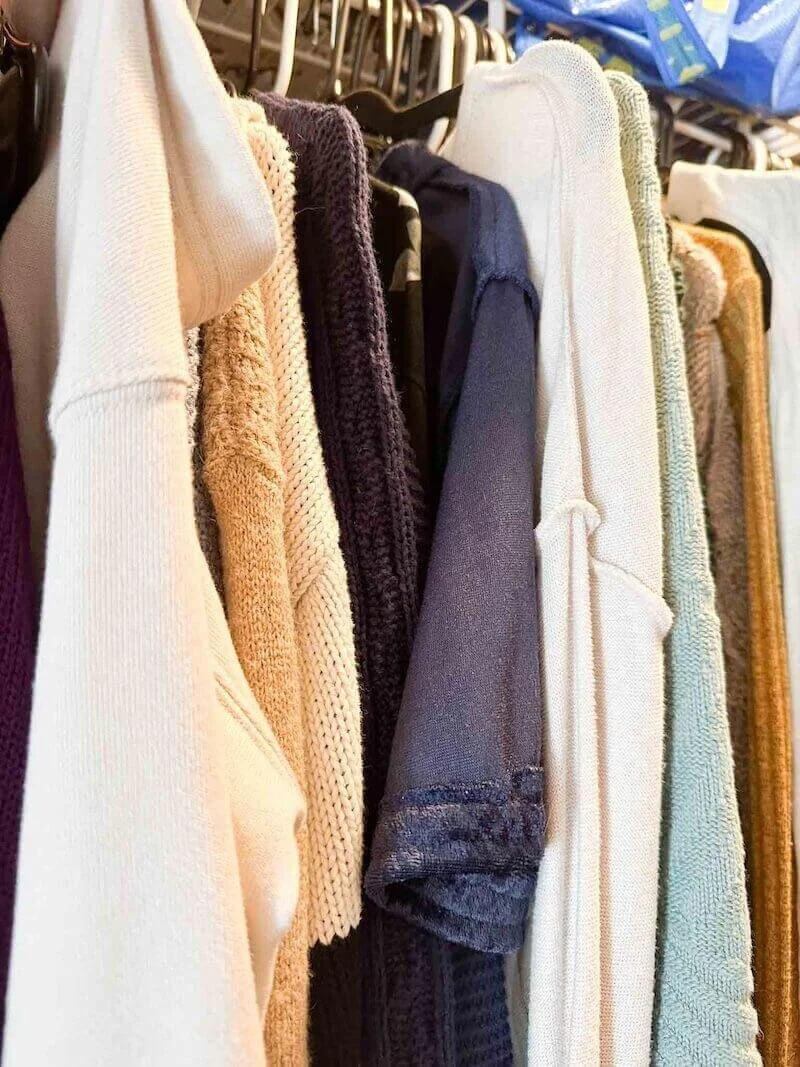Biodegradable vs. Compostable: What's the Difference?
In an increasingly eco-conscious world, you’ve inevitably come across terms like upcycle, recycle, reduce, and reuse. You likely employ these practices yourself and pay careful attention to labels on everything from cereal boxes to detergent pods.
Two other terms that often appear in this context are biodegradable and compostable. They are even used interchangeably at times.
But there is a difference between them, which is important to note if we wish to dispose of items properly and responsibly. Let’s start by breaking down the terms.
What Does Biodegradable Mean?
Biodegradable refers to the ability of a material to be broken down naturally by microorganisms like bacteria and fungi in a way that is not harmful.
Materials are broken down into smaller components – like carbon dioxide, water, mineral salts, and biomass – and assimilated back into the environment.
Biodegradation can take anything from a few days to centuries, depending on the material composition.
What Does Compostable Mean?
Materials that are compostable are biodegradable, but must be broken down under specific conditions by humans.
Instead of merely returning items to the earth, they are turned into something new to be used for the earth’s benefit: compost.
Compostable items create a nutrient-rich material called humus, which contributes water, oxygen, and organic matter to create a healthy soil environment for new and optimal plant growth.
There are two types of composting: residential (the kind you do at home) and industrial (also known as commercial).
How are Biodegradable and Compostable Different?
Biodegradable items break down naturally while composting requires a specific setting.
From plastic and paper to food and garden waste, technically everything biodegrades, breaking down into its constituent parts. Compostable, however, refers to organic materials.
The rate at which biodegradable and compostable materials break down also differs. Biodegradable materials can take anything from a few days to centuries. Compostable items break down faster, usually in a matter of days or months.
Both biodegradable and compostable items require specific conditions in which to break down.
If a biodegradable product is buried in a landfill under tons of trash, it’s not going to break down, because it does not have the necessary exposure to bacteria, heat, oxygen, moisture, or light.
The same is true of your compost heap, which requires organic matter (food scraps, grass cuttings, fallen leaves) along with the right amount of oxygen.
Your compost needs to stay moist and aerated and the container housing it should ideally be placed in a dry and shady spot.
It's important to note that select biodegradable items can potentially leave toxic residue behind after breaking down.
What are the Environmental Benefits of Composting & Biodegrading?
Now you may be asking: what is better, biodegradable or compostable?
Generally compostable comes out tops because the materials do not break down into anything potentially harmful.
While many definitions of the term biodegradable state that materials break down in a way that is not harmful, the reality is that most things break down and the resulting components are not always harmless.
The benefit of composting is the reduction of waste, especially food and garden waste.
It also contributes to healthy soil which is key to nutrient cycling, optimal water infiltration, and preventing soil erosion. This in turn helps combat climate change, because healthy soil sequesters carbon thus reducing greenhouse gas emissions.
As mentioned, most materials (whether organic or otherwise) will biodegrade, but can take a long time to do so. This can make biodegradable labels misleading because they don’t tell you how long something will take to break down.
Furthermore, the resulting components may be of greater concern than the initial product. Plastic is a good example.
After years and decades, plastic does eventually break down; but the result is microplastics, a material of great concern to the environment, especially the marine world.
And while plastic items are breaking down, they still pose other risks in their original form, such as choking hazards. Exacerbating issues further is that chemicals may leach out while the product is breaking down.
A similar issue occurs with paper and wood: wood turned into paper can biodegrade quickly but wood turned into building materials may take longer.
And if the paper or building materials have been treated with chemicals (like dye or formaldehyde), it can make the product more difficult to break down, leaching toxins into the environment as it does.
Biodegradation is not without its benefits. Biodegradable items also reduce food waste and keep products out of landfills and incinerators.
Avoiding food waste is a significant measure in protecting the environment. When we waste food, we waste all the water and energy it took to make and distribute the food. It also results in extra waste from packaging.
Moreover, food waste produces the potent greenhouse gas methane when dumped into landfills, where it does not have the right conditions to biodegrade.
Compostable items are not without problems either.
You may have seen compostable labels on plastic items. This material is known as bioplastic, usually made from corn starch, soy, or cellulose. It is often used to make takeout containers and cutlery.
The advantage of bioplastic compared to conventional plastics is that it can reduce our reliance on petroleum-based plastic thus reducing greenhouse gas emissions.
However, bioplastic items need the right conditions to break down and these cannot often be achieved at home in a backyard compost. It would likely need to be sent to industrial composting facilities.
Keep in mind that biodegradable and compostable items may not be recyclable. So, if an individual does not have access to city services that provide an industrial composting facility this can create additional waste.
If your city does not provide composting services and you do not have the space for a home compost pile, it is worth looking into third party services that will pick up your compost or indoor composting machines.
It's important to note that these options might have limitations on the types of items you can compost.
What Items are Biodegradable and What Should I Be Composting?
While labels on packaging can act as a guide, it’s important to stay informed about biodegradable and compostable items to avoid greenwashing.
The key thing to remember is that all compostable items are biodegradable but not all biodegradable items are compostable. So what are some examples of compostable products and biodegradable products?
Food scraps such as vegetable peels and eggshells are biodegradable and great for compost, although it’s ideal to clean raw egg from shells and cut up fruit and vegetable peels for smaller composts. Citrus is biodegradable but caution must be exercised when composting. The acidity can deter microorganisms and worms and it can take longer to break down. Cut citrus (like lemon and orange peels) into small pieces to help it break down faster. It also helps to dry out the peels first. Balance it with other items to level out the acidity in your compost.
Garden and yard waste such as plant prunings, grass clippings, and fallen leaves are biodegradable and compostable, providing nitrogen and water when they break down.
Select tea bags are compostable. It depends on if the tea bag is made with plastic. If the tea bag and tea is composted it is a great way to add some nutrients to your compost.
Paper, especially newspaper, is biodegradable and can be composted; but do not add treated paper such as colored or glossy paper to your compost. Cardboard is a great product because it is biodegradable, compostable, and recyclable.
Bioplastic is a tricky one. While it is compostable, it is not really biodegradable in marine environments, because it takes a long time to break down in those conditions, adding to the plastic pollution problem. Bioplastic also produces methane when it ends up in landfills and contaminates recycling streams if mixed in with regular plastic.
Sustainable Living Tips for Composting
If you are passionate about leading a sustainable lifestyle and reducing your impact on the environment, knowing the difference between biodegradable and composting is an important eco-friendly step you can take.
Remember to read labels
Be mindful of greenwashing
If you are composting, commit to the practice
Avoid sending bioplastic or vaguely defined biodegradable products to landfills or accidentally adding them to your recycling bin where they will only exacerbate the issues the environment faces.
Avoid products with plastic packaging especially at the grocery store!
When purchasing new items try to invest in sustainable products
Work on buying less and wasting less by integrating zero waste practices into your lifestyle
Hopefully this guide gave you some further information on the composting process, what compostable means, what biodegradable means, and some tips for reducing your carbon footprint and practicing more sustainable living.
Ideally in the coming years we will see more industrial facilities take on composting to make it more accessible to consumers and to address the waste problem, greenhouse gases, and the environmental impact of waste.
Meet the Author
Claudia Hauter is a South African writer, copy editor, and content creator with degrees in Drama and Anthropology. She works in television managing web content. When she isn’t reading or writing, she’s walking her dog, finding small businesses and markets to support, or attracting butterflies and bees with her vegetable garden. Learn from Claudia on Twitter or Instagram.
For more ethical & sustainable tips be sure to explore more conscious lifestyle blog posts, follow The Honest Consumer on social media, subscribe to our newsletter, & check out the Ethical & Sustainable Brand Directory.






















